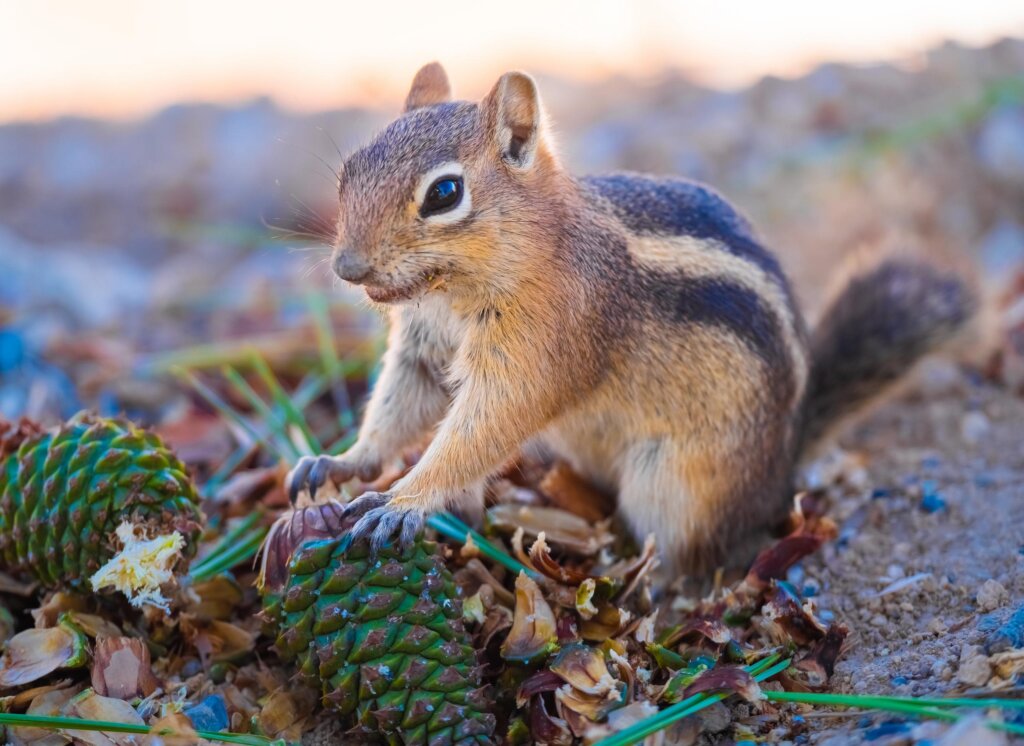Chipmunks are small, cute rodents that are a popular sight in many parks and gardens. They are members of the squirrel family, and there are more than 20 different species of chipmunks found throughout North America. In this article, we will explore the physical characteristics, behavior, diet, habitat, and reproduction of chipmunks.

Physical Characteristics
Chipmunks are small rodents that typically measure around 5-6 inches in length, not including their tails. They have short, sturdy legs and a long, bushy tail that is roughly the same length as their body. They have large, round eyes and small, rounded ears. Their fur is usually brown or gray, with white stripes on their faces and backs. The stripes can vary in number and pattern depending on the species. Some species have light-colored bellies, while others have darker bellies. Their fur is soft and dense, which helps to keep them warm during the colder months.
Behavior
Chipmunks are known for their playful and curious nature. They are active during the day and spend most of their time foraging for food, exploring their surroundings, and socializing with other chipmunks. They are also known for their unique vocalizations. They make a variety of sounds, including chirps, squeaks, and trills. These vocalizations are often used to communicate with other chipmunks, especially during mating season. Chipmunks are also excellent climbers and can scale trees and other vertical surfaces with ease. They are also skilled diggers and will create complex burrow systems underground for shelter and protection.

Diet
Chipmunks are omnivores, which means they eat both plant and animal material. Their diet consists of nuts, seeds, berries, insects, and other small animals like snails and worms. They have a special cheek pouch that allows them to carry food back to their burrows to store for later. During the fall, chipmunks will gather and store large amounts of food to prepare for the winter months when food is scarce. They store food in their burrows, which can sometimes result in the spread of seeds and other plant material, making them an important part of the ecosystem.

Habitat
Chipmunks can be found in a variety of habitats, including forests, woodlands, and meadows. They prefer areas with plenty of cover and vegetation, as well as access to food and water. Chipmunks are also adaptable animals and can be found in suburban and urban areas, such as parks and gardens. They are known for their ability to coexist with humans and are often considered a welcome addition to gardens and backyards.